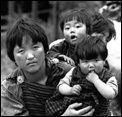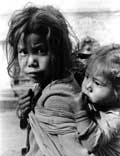201 million women, especially in the poorest countries,
still have
an unmet need for effective contraception.
Meeting their needs would cost about $3.9 billion a year, and
prevent 23 million unplanned births a year, 22 million abortions, 142,000 pregnancy-related deaths (including 53,000 from
unsafe abortions) and 1.4 million infant deaths.But resources have fallen
short. Donors agreed to provide $6.1 billion a year for population and
reproductive health programs by 2005, a third of total needs. In 2002
contributions were around $3.1 billion—only half their commitment
(USA's meager commitment).
• More than 350 million couples still lack
access to a full range of family
planning services.
• Complications of pregnancy and childbirth remain a leading cause of death and
illness among women: 529,000 die each year, mostly from preventable causes.
• Five million new HIV infections occurred during 2003; women are nearly half of
all infected adults, and nearly three fifths of those in sub-Saharan
Africa.
• While fertility is falling in many regions,
world population will increase
from 6.4 billion today to 8.9 billion by 2050;
the 50 poorest countries will
triple in size. |
 |
Some 2.8 billion people—two in five—still struggle to survive on less than $2 a
day. Poverty perpetuates and is exacerbated by
poor health, gender
inequality and rapid population growth.

|
